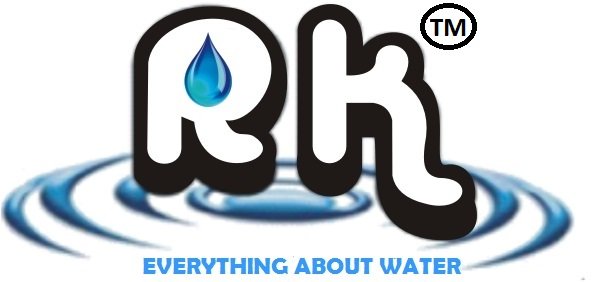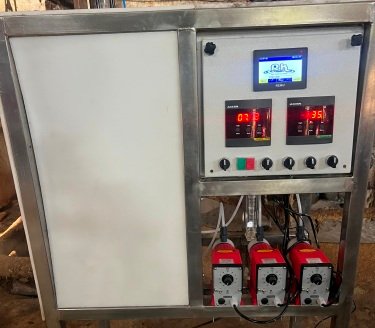WHAT IS CHLORINE DIOXIDE?
Chlorine Dioxide has the chemical formula ClO2 and is a yellow to brown coloured gas at room temperature and pressure. It is a highly reactive oxidant and for all practical areas of water disinfection, it must be generated on site using proprietary reaction and dosing equipment.
Chlorine Dioxide is ideal for water disinfection for potable consumption; paper industries circulation water, food and beverage applications involving water for washing and as an ingredient and industrial water circuits for bacterial, slime and biofilm control. Potable water disinfection produces no THM’s and very low AOX. ClO2 is pH independent and generated on site. Chemical dosing systems are simple and compact.
HOW DOES IT WORK?
Of the oxidizing biocides, chlorine dioxide is the most selective oxidant. Both ozone and chlorine are much more reactive than chlorine dioxide, and they will be consumed by most organic compounds. Chlorine dioxide however, reacts only with reduced sulphur compounds, secondary and tertiary amines, and some other highly reduced and reactive organics. This allows much lower dosages of chlorine dioxide to achieve a more stable residual than either chlorine or ozone. Chlorine dioxide, generated properly (all chlorine dioxide is not created equal), can be effectively used in much higher organic loading than either ozone or chlorine because of its selectivity.
We can provide the following types of chlorine dioxide generation:
- ONE PUMP (WITH CHLORINATION
- TWO PUMPS
- THREE PUMPS (LIQUID CHLORINE)
A) One Pump (With Chlorination)
Chlorine dioxide can be produced by reduction reaction of chemical in a strong acid solution of hydrochloric acid. For producing 100gm of ClO2 the theoretical reaction is as follows:
Cl2 + chemical = 2ClO2 53g + 670g = 100g.
The system is used using chlorinated water as an input where chlorination is practiced.
The conversion is dependent on flow & concentration of chlorine in water and also the contact time. One can expect higher conversion in this method of usage.
B) Two Pumps
Where chlorine is not in use one can generate ClO2 in presence of HCl & water. The concentrated HCl is recommended so as to get pH condition of 3 at the reaction zone for better conversion. The reaction time is comparatively high in this method.
Theoretically the following is the requirement while in practice the conversion could be 60-80 %.
chemical +4HCl=4ClO2 840g + 740g=100g (30% HCl)
C) Three Pumps (Liquid chlorine)
The conversion in presence of chlorine is better. Where gaseous chlorination is not practiced & for smaller systems one can use liquid chlorine as chlorine source.
2HCl + 3NaOCl + chemical=2ClO2 180g + 2070g + 270g=100g 30 HCl 8% active Cl2 in NaOCl
APPLICATIONS
- Drinking Water
- Breweries
- Soft Drink Industry
- Industrial Water
- Cooling Water
- Waste Water
- Agriculture
- Water reuse applications
- Machine coolant microbiological & odour control
- Food processing plant sanitation
- Bathroom sanitation & odour control
- Septic tank odour control
- Local Municipalities
- Fruits & vegetable sanitation



